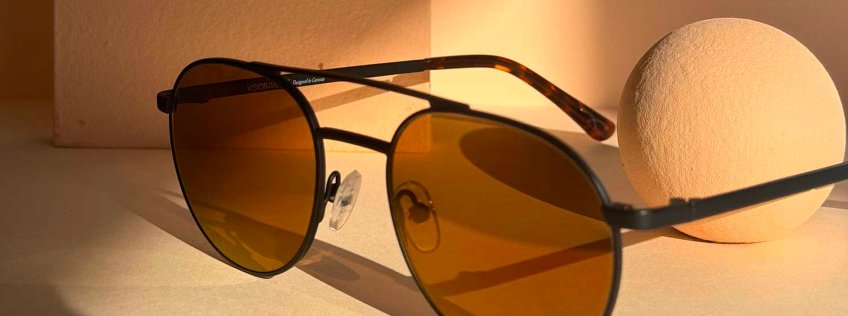
Photochromic lenses: the art of brightness adaptation
by Optoplus / February 2019
Technology is being incorporated into our day to day life and it’s even having an effect in the eyewear industry. Shades no longer have to be superimposed on ophthalmic lenses, thanks to photochromic lenses (often called adaptive lenses). However, are they the best option for you? Our eyecare professionals explain everything there is to know about these lenses that are getting more popular than ever.
What are photochromic lenses?
Photochromic lenses look like regular ophthalmic lenses, with only one exception: they adapt to ambient light. Indeed, they will usually be transparent on the inside, but tinted on the outside just like traditional sunglasses. Although each brand has its own characteristics, this type of lens is available in several shades, from brown to gray to dark green.
These glasses can fit any type of frame including the most intricate ones. They can also be thinned for a lighter and a prettier aesthetic. They also help you read smaller print and sharpen colour contrast. It’s no great surprise, but photochromic lenses also help protect your eyes! By protecting them from UVA and UVB rays, this type of lense help prevent premature aging of the eye.
Types of photochromic lenses and their benefits
In general, photochromic lenses have three major advantages: they are practical, comfortable and protective. In addition, they’re also available in four types, each with their own advantages: single vision, multifocal and progressive lenses.
Choose photochromic lenses
1.Photochromic glasses
2. The materials
3. The coatings
Photochromic lenses have a lot of advantages, so why not give them a try? At OptoPlus eyecare clinics, our optometrists will advise you on the different types of photochromic lenses. Following an eye exam, we will offer solutions suited for your eyesight and the need to better protect your eyes.
Share this article





